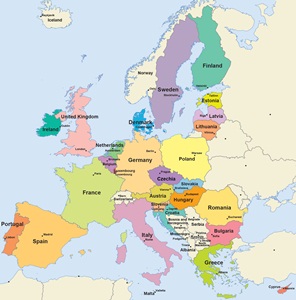A paper presented in the IMF Blog has suggested an integrated capital market for Europe where savers and firms can invest and borrow beyond their national borders, with opportunities to diversify portfolios and lower funding costs.

Writing in the IMF Blog, economists Ashok Vir Bhatia, Srobona Mitra and Anke Weber says the idea of an integrated financial system that offers a richness of financing choice remains an elusive goal in Europe.
According to the authors of the report, recent research has found that despite the common currency, Euro, European finance is still sharply segmented along national lines, with savers and investors depending heavily on national banking systems. Although the landscape is dotted with many different types of investors and intermediaries, their focus is mostly domestic—“home bias” is pervasive, they say.
This, they say has resulted in an uneven playing field - the financing costs companies pay depend hugely on their country of incorporation - and collateral-constrained startups find it hard to get any funding at all, and consumption is not shielded from local economic shocks.
Lowering barriers to a European Capital Markets Union offers the prospect of powerful macroeconomic benefits, they say.
Firms in, say, Greece, pay a 2.5 per cent higher rate of interest on their debt than similar firms in the same industry in France; Italian firms pay 0.8 per cent higher interest on debt than comparable firms in Belgium, they point out, adding that Greek and Italian firms are not alone in fighting this uphill battle on funding costs—there is no level playing field.
In addition, firms with limited plants and machinery to offer as collateral such as an IT start-up face hurdles accessing bank loans. Such companies grow significantly faster in more developed capital markets, where venture capital funds with diversified portfolios thrive and are more willing to take the risk of providing unsecured financing to innovative players.
Finally, private cross-border risk sharing is severely limited, with local consumption being four times more sensitive to local shocks in the 28 EU countries than in the 50 US states. For every 1 percentage point drop in national GDP growth, consumption drops by 80 basis points, on average, if the country is in the EU, compared to only 18 basis points for the average US state.
Obstacles to capital market integration
The study included a survey of national market regulators and some of the largest institutional investors in the EU, which identified important obstacles to greater capital market integration in Europe.
Responses flagged shortcomings in information on both listed and unlisted firms, in insolvency practices, and to a slightly lesser extent, in capital market regulation. Some countries were also seen to have weak audit quality, overly complex procedures for retrieving withholding taxes on investments in other countries, and unduly high tax rates.
Some of the benefits of lowering such barriers can be quantified. Using publicly available data, and guided by the survey results, researchers have found that lowering identified barriers offers the prospect of powerful macroeconomic benefits: lower funding costs for firms, larger intra-EU portfolio capital flows, and more risk sharing across borders.
If Italy, for example, were to improve its insolvency practices to best-in-class standards, it could reduce its firms’ average debt funding cost by some 0.25 percentage points. Similarly, Estonia and Greece could see interest cost reductions of some 0.50 percentage points, they point out.
According to the researchers, an improvement in regulatory quality in destination countries would help double bilateral portfolio asset holdings.
Such improvements in regulatory quality and insolvency regimes would also improve individual countries’ shock-absorption, halving the sensitivity of local consumption to local shocks.
Based on these findings—and building on the achievements of the EU’s Capital Market Union Action Plan— the researchers have urged European policymakers to consider three targeted sets of initiatives in pursuit of greater capital market integration.
- Improve transparency and disclosure by introducing centralised, standardised, and compulsory electronic reporting for all issuers of bonds and equities;
- Contain systemic risk and improve investor protection where it lags through a series of actions to sharpen regulatory quality, guided by a principle of proportionality, which may include creation of central clearinghouses, an European Securities and Markets Authority, a new pan-European pension product, and maximising regulatory cooperation with non-EU countries.
To upgrade insolvency regimes, the European Commission should, first, carefully collect data in an area where the existing information is unreliable; second, develop a code of good standards for corporate insolvency and debt enforcement processes; and, third, systematically follow up on EU member states’ progress toward observing such standards.
Larger intra-EU portfolio flows would help move the EU toward realizing its full economic potential. The relatively technical steps we recommend for removing identified barriers to such flows should be feasible without high-level political deliberations, the researchers conclude.































